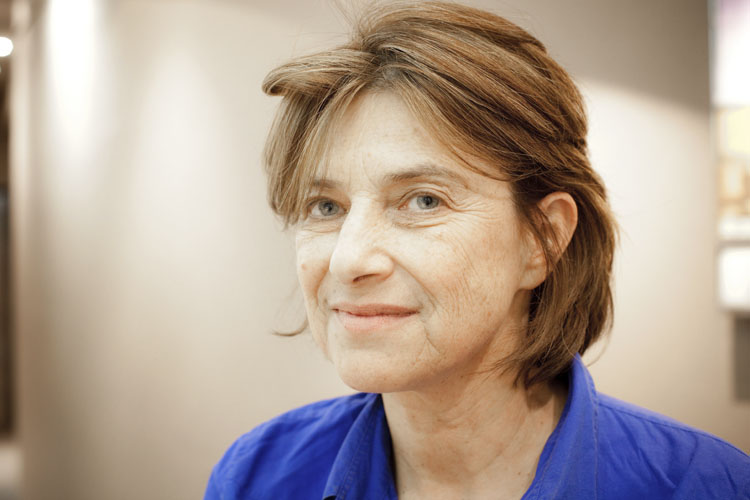
By Gareth Lloyd
Existing beneath the razzle and dazzle of mainstream cinema are an underground community of cinephiles, who remain intent on subverting the conventional, and exploring the realms of cinematic capability. Fifteen of these individuals are listed below – a multicultural select few who specialise in an engagement with experimental filming techniques; creating alternative works that question the medium we so often take for granted.
There remain hundreds of talented avant-garde artists scattered all over the globe, but the list below can be recognised as comprising of key members that constitute the bedding of the cinematic underground, please note this list is ranked in no particular order.
1. Andy Warhol
A unique character in every sense of the word, Andy Warhol remains one of the most inimitable figures ever to pick up a paintbrush or camera. Conveying a curious demeanour and pasty complexion, Warhol specialised in the structural aspect of the American avant-garde, utilising a minimalist aesthetic and silent soundtrack to turn images of everyday America into exhibitions of art.
Warhol’s fixed camerawork enforced a meticulous examination of sexual explicitness that had been consciously repressed and unexplored in mainstream cinema before his arrival. But this unflinching exploration of a taboo subject was fitting in its aligned attitude with sixties America. It was a time where the youth of the USA engaged in sexual liberation.
Warhol veered in an opposite direction to those demanding a tighter grip on societal conduct, using a camera as a tool to dig deeper for an up-close-and-personal look at the taboo subject of sex that was oozing through freethinking America.
The likes of his 1963 film “Kiss” initially appears as intrusive in its unnerving refusal to turn away from two breathless lovers, but eventually emerges as a document of the beauty of human intimacy.
An even more controversial case in point is his scandalously titled picture “Blow Job”; which consists entirely of a static shot of young man DeVeren Bookwalter apparently receiving fellatio from an unseen participant. Bookwalter’s neck writhes and his eyes roll, but the camera remains resolutely static; enveloping the film in sexual ambiguousness. Is there even a sex act being performed at all?
Warhol also filmed a collection of portraiture cinema known simply as the “Screen Tests”, where he instructed a variety of individuals of all shapes and sizes to simply stare into his camera. The most captivating of these characters is a girl named Ann Buchanan, who attempts to return the unblinking gaze of the camera and ends up with tears streaming down her cheeks. The result is a captivating, tragic and beautiful piece of authentic filmmaking.
For all his experimental artistic efforts, Warhol’s 1964 production “Empire” remains arguably his most cryptic work. Lending a hand from one of the best-in-the-business in Jonas Mekas for the film’s cinematography, the completed effort documented over eight hours of footage of the iconic American landmark.
Shot at 16 frames per second, Warhol’s camera simply stares at the Empire State Building for an unwatchable amount of time – asking difficult questions about our patience as viewers and indeed as humans.
2. Luis Bunuel
Hailing from Spain but often associated with the early cinema of France, Luis Bunuel is a pioneering figure in the surrealist avant-garde movement of the 1920’s. A provocateur who thrived on maddening satire, Bunuel’s near fifty-year filmmaking career contained works that were often immersed in dream logic, were consistently controversial, and always much discussed.
In 1929, Bunuel joined forces with fellow surrealist Salvador Dali to launch a combined directorial effort named “Un Chien Andalou”, a film now universally recognised as one of the greatest pieces of world cinema ever made. Running for just fifteen-minutes, it is the first few moments of the film that have remained the most iconic, as a sitting woman calmly has her left eye stretched open and slit by a razor.
Outrageous in content and chaotic in chronology, “Un Chien Andalou” is the probably the best-known surrealist avant-garde film. To attempt to unpick it is a waste of time – with Bunuel purposely juxtaposing images against one another to allow for a nonsensical, violent contrast that recontextualises typical modes of both filmmaking and viewing.
A disturbing side-note shows that the two leads in the film both eventually committed suicide – one overdosing and one enacting self-immolation – providing “Un Chien Andalou” with an inadvertent corroboration of its already tragically bizarre aura.
Bunuel followed “Un Chien Andalou” with “L’Age d’Or” in 1930, a film that incited uproar and riots upon its release. The screenplay (also wrote by Dali) which underlined the hypocrisy of Catholicism is brought alive by surrealist techniques, with the story told in a series of maddening vignettes involving sex and violence.
Aside from the two aforementioned avant-garde gems made with Dali, Bunuel’s strikingly daring cinema is perhaps best exemplified by his surrealist documentary “Las Hurdes” – a travelogue that represents the poverty-stricken mountainous town of La Alberca in a peculiarly sensationalised way, underscored by an almost mocking tone.
Steeped in surrealist themes of death, disfigurement and dream-like qualities, the film was quickly banned by Spanish leader Francisco Franco for its hellish depiction of Spanish land. Bunuel seemingly killed at least two animals during its production; smothering a donkey in honey so it would be stung to death, and forcing a mountain goat to stumble off a high cliff.
Surrounded by copious amounts of controversy and conspiracy theories, there is even modern-day speculation that the whole documentary was completely fabricated.
It seems fitting that the greatest story about Bunuel remains one shrouded in scepticism. The story goes that after the premiere screening of “Un Chien Andalou”, the Spaniard positioned himself behind the screen with stones in his pockets, ready to pelt them at the angry mob that was sure to arise upon the screening’s conclusion. No fact about Bunuel is ever certain, but if that tale isn’t true; it ought to be.
3. Stan Brakhage
“I document the act of seeing” claimed Stan Brakhage; one of avant-garde’s most treasured assets since the inception of cinema. Born in Kansas City, Missouri, Brakhage’s influence on American experimental filmmaking stems from his documentation of an eye before language, and a desire to create an unmediated cinematic experience.
Brakhage created films that documented the pre-linguistic eye; a purer form of vision free from the baggage of language. For several of these productions, he didn’t even use a camera. Indeed, for Brakhage, the capability of the camera to see further was less interesting than the inner vision of the human eye.
He remained fascinated by the flashing lights and shifting patterns created when one rubs or presses on the eyelid, and attempted to recreate this closed-eye vision through film with the likes of “Eye Myth”, “Black Ice”, and “Rage Net”. Each of these films consist of incoherent streaking dots and spots; reconstructing the eye’s inner vision and putting it on screen.
Brakhage even went as far as to speculate on the vision of other beings, with his cameraless 1963 film “Mothlight” being an appropriate example. Brakhage described it as “what a moth might see from birth to death if black were white and white were black”.
Brakhage made the film by collecting moth wings, blades of grass and leaves and pressing them onto the film which was then fed through the projector. The result is a visceral experience of nature intertwined with cinema – a document of pure vision.
Aside from analysis of the impact of light on vision, Brakhage also sought to foreground our visceral responses to certain images that make us recoil before we have even acknowledged the meaning of the image itself. His 1971 documentary film “The Act of Seeing with One’s Own Eyes” highlights our physical response to such images, with Brakhage taking his camera into a morgue and filming a variety of autopsies in patient, silent and unblinking fashion.
A fearless examination of the human eyes and body, and the notion of subjectivity, the film contains a plentiful amount of utterly unforgettable images, and is the most enthralling cinematic experience that can never be recommended to anyone.
4. Rainer Werner Fassbinder
For a man who lived at a pace of a thousand-miles-an-hour, Rainer Werner Fassbinder’s tragic passing was one of staggering contrast in its unobtrusive repose. The capricious king of New German cinema lived and breathed film – directing, screenwriting, producing and acting in 40 productions in 14 years before his tragic passing at the tender age of 37; quietly slipping away alone in his room after a typical night of drink and drugs that had become his standard diet.
Fassbinder stood shoulder to shoulder with Werner Herzog in his contribution to New German cinema of the seventies; often taking the movement into new, fascinating experimental directions.
A larger than life character with a relentless work ethic, Fassbinder’s collection of strangely mesmerising cinema included “The Bitter Tears of Petra Von Kant” and “World on a Wire”, but his style truly came to fruition with 1974’s “Fear Eats the Soul”. Inspired by Douglas Sirk’s melodrama “All That Heaven Allows”, the film tells a tale of unlikely romance between Moroccan labourer Ali, and 60-year-old widower Emmi.
Stilted and strange, “Fear Eats the Soul” is full of stretched-out moments of silence and endless stares of judgement from other characters as Ali and Emmi share quiet instants with one another. Fassbinder’s framing becomes a character in itself, whilst the murky mise-en-scene portrays a continuously uneasy atmosphere. Bold and powerful, yet also darkly humorous, “Fear Eats the Soul” remains one of Fassbinder’s greatest pieces of work.
It is admirable that Fassbinder’s later efforts showed no sign of a slide in class, with “Lola”, “Veronika Voss” and “The Marriage of Maria Braun” resembling the striking quality that he had churned out since his first feature film “Love is Colder than Death” in 1969. One of cinema’s most exhaustingly intrepid characters, Rainer Werner Fassbinder remains a key figure in the history of avant-garde film.
5. Chantal Akerman

If there were ever a women’s cinema, then “Jeanne Dielman, 23 Quai du Commerce, 1080 Bruxelles” is it. A pivotal work with regards to the role of women in cinema and society, “Jeanne Dielman” topples three hours of running time in a 48-hour depiction of a widowed mother and a life entrenched in domesticity.
Resolutely structural cinematography and patient editing frame the eponymous character’s life of household routine in a distinct cinematic space unlike anything before it, and the film put young female director Chantal Akerman on the map.
Originally from Belgium, Akerman moved to New York at the age of just 21, and after releasing “Jeanne Dielman” went on to project her life in the city through her essay film “News from Home”; a perfect example of the personal filmmaking. It’s a piece that demands viewer patience, but is ultimately enormously rewarding.
“News from Home” consists entirely of static long shots of grubby seventies New York City – streets, doorways, subway carriages and platforms – with Akerman reading aloud letters from her mother over the imagery. Her static camera is often regarded with second-glances and suspicion by passers-by.
Whilst in reality these citizens are simply wondering what Akerman is doing with her camera, the effect it creates is one of alienation. These New Yorkers appear to be looking at her with unfamiliarity; she feels acutely aware of her foreign heritage.
Yet, as the content of the letters becomes more distant, the soundtrack of the streets gets louder. By the film’s conclusion, the roaring subway train drowns out her mother’s words – reflecting how Akerman has made a significant shift away from her roots and been immersed by the culture of her new city. Even the camerawork becomes a little more fluid, with one segment filmed from the window of a moving taxicab to resemble a lateral tracking shot: a rare departure from the film’s static camerawork.
“News from Home” – much like “Jeanne Dielman” – is so simple and serene, yet so dense and zoetic. To achieve such powerful effects from such minimalistic imagery is hugely admirable, and Akerman is a vital member of the avant-garde whose filmmaking deserves great attention.
6. Man Ray
Despite being a devoted painter first and foremost, Man Ray’s contribution to avant-garde film – and cinema in general – cannot go unnoticed. Having made contributions to both the Dada and Surrealist movements, Ray soon emerged as one of leading avant-garde artists in 1920’s and 30’s France.
His experimentation with cameraless photography or ‘Rayographs’ as he called them, would become a facet of filmmaking that several future avant-garde artists would draw on, and the eventual release of a documentary of his life named “The Prophet of the Avant-Garde” (made by Mel Stuart and Neil Baldwin) is proof of the integral part he played in the establishment of experimental filmmaking.
Ray dabbled in a several kinds of experimental features. The likes of “Le Retour à la Raison” (“Return to Reason”) documented a selection of the aforementioned Rayographs, whereas “L’Étoile de mer” (“The Sea Star”) placed characters within a mise-en-scene of wild distortion, with every shot manipulated in some way as to portray a sense of fragmentation and lack of focus.
“Emak-Bakia” is almost a combination of the two – creating surreal effects through both distorted camera techniques and cameraless photography. “Les Mystères du Château de Dé” (“Mysteries of the Cheateau of Dice”) was Ray’s longest film at a modest 29-minutes, depicting two masked individuals dictating their next move by a role of a dice.
Ray’s cinema managed to interconnect painting, photography, poetry, music, and architecture. His amalgamation of art forms provided his films with a thoughtful, bizarre quality, and he can be considered amongst the greats of the avant-garde.
7. David Lynch
One of cinema’s most necromantic figures, David Lynch’s style of filmmaking is indisputably his own. With surrealist dream-logic always decisively in play, his infusion of the avant-garde with classic American cinema has seen the director paint a darkly twisted grin across the typically handsome face of Hollywood.
Lynch’s consistent practice of a deliberately obscure and convoluted style has both enraptured and infuriated critics, academics and public audiences alike since his first feature “Eraserhead” in 1977.
The film achieved a cult following that has since ballooned into fiercely loyal Lynchian fan-base, and given the fire-starting reception of “Blue Velvet”, “Wild at Heart” and “Lost Highway” that arose after his first film, it’s easy to see why Lynch has his own devoted supporters section in cinema’s cult corner.
Perhaps Lynch’s greatest achievement is the absolutely mesmerising “Mulholland Drive”; a film that’s magnificently unique in its strange beauty. Featuring superb performances by Naomi Watts and the voluptuous Laura Elena Harring, “Mulholland Drive” depicts the story of a young actress trying to break onto the Hollywood film scene, falling in love, and wrestling with sickening heartbreak.
Punctuated with a gorgeously gulp-inducing score by Angelo Badalamenti, Lynch creates a wistful world that veers down a variety of endless avenues, loftily floating in a haunting, beautiful space of romance, riches and betrayal. Instead of estranging the audience with its complexity, it pulls us in like a moth to a flame. “Mulholland Drive” is, like most Lynchian cinema, limitlessly layered.
You don’t have to understand David Lynch. But you can’t help but respect him. Even those most averse to the avant-garde will hold a begrudging fascination with his unique style. Lynchian film really is something else.
8. Derek Jarman
A treasure of British avant-garde cinema, Derek Jarman is often cited by young experimental UK filmmakers as a key source of inspiration for their work.
Working from 1976 until 1993, Jarman specialised in deeply personal pictures; often employing a Super 8mm format to create elliptically structured films scattered with homoerotic imaginings and desires. His use of dark, rich colour intensified his mode of poetic address, and despite being a self-declared atheist, many of Jarman’s productions often resonated with spiritual connotations.
Jarman was openly homosexual, and several of his films angrily addressed the issue of homophobia; most prominently “The Last of England” which is one enormous roar of disapproval at Thatcher’s Britain and its refusal to willingly accept homosexuality.
His 1985 art-house drama “The Angelic Conversation” thrives on themes of homoeroticism as Judi Dench reads Shakespeare’s Sonnets above imagery of two male lovers, and his 1990 feature “The Garden” audaciously overlaps homoerotic iconography with Christianity and references to the Garden of Eden.
Jarman’s greatest achievement remains his last picture; his 1993 production titled “Blue”. Arguably his most experimental film, it comprises of a tranquil but arresting blue block of colour for 79-minutes, whilst a variety of narrators read aloud from Jarman’s diary. “Blue” would be intriguing on its own, but remains powerful and poignant given Jarman’s health condition.
By this time, the director has lost a considerable amount of sight due to his battle with AIDS, and “Blue” goes into detail about the tedium of his hospital visits and health problems. The aural cues and soundtrack are crisp, clean and clear – with the viewer being placed inside Jarman’s head; inhabiting his body and seeing through his eyes of continuously blue vision.
It’s an incredible experience, and a fitting testament to daring nature of one of Britain’s bravest filmmakers. Jarman truly earned the serenity that radiates from “Blue”.
9. Kenneth Anger
A highly controversial figure even amongst the avant-garde, Kenneth Anger has been brought up on obscenity charges, associated with Satanism, and been pigeonholed as an obsessed provocateur ever since he began making films in the 1940’s. Whatever his label, Anger’s cinema is unavoidably indelible – often telling incoherently salacious stories that brim with jaw-dropping imagery of surrealist and occult homoeroticism.
Often regarded as the first openly homosexual filmmaker, Anger released “Fireworks” at the tender age of 20, a film recorded in his back garden with the homoerotic content that would eventually call him up for obscenity charges. After being acquitted when his film was considered art, Anger never looked back.
The American went on to create “Rabbit’s Man”, “Eaux d’artifice”, “Inauguration of the Pleasure Dome” and “Lucifer Rising”, which all forced significant rumblings amongst the underground filmmaking community. Reliably unpredictable, his 1969 production “Invocation of my Demon Brother” even featured an electronic score composed by Mick Jagger.
Aside from his baffling but brilliant filmmaking, Anger also dabbles in Hollywood mythology, having written a book on the subject named “Hollywood Babylon”. Stocked with conspiracy theories about a whole host of A-listers, anyone intrigued by weird and wonderful gossip need look no further than this publication; a bewildering book written by a bewildering individual.
10. Maya Deren
In a sense, Maya Deren symbolised the avant-garde in human form. She completely embodied experimental art; be it poetry, dance, photography, or cinema.
Part of a Jewish family who fled to America after fearing anti-Semitic outbreak in her hometown of Kiev, Deren fought her way onto the art-house scene in 1943 with “Meshes of the Afternoon”; a production made with her husband Alexander Hammid. Rolling with a cyclical narrative and recurring motifs, “Meshes of the Afternoon” was a typical representation of Deren’s filmmaking in its creative employment of rhythm.
Her later features “The Witch’s Cradle”, “At Land” and “The Private Life of a Cat” all went on to be considered as aesthetically significant in terms of experimental cinema, and Deren’s contribution to the avant-garde also involved her published writing on film theory. Within her work, she often discussed the poetry of filmmaking, and the ability of the avant-garde to portray the wildest cinematic ideas.
Deren was just 44 when she died from a brain haemorrhage in 1961, but her legacy lives on to this day.
11. Jonas Mekas
Often cited as the Godfather of the American avant-garde, Jonas Mekas is the catalytic source of the fire of experimental filmmaking. His tie to such a patronal label remains unsurprising and merited to this current day given his pioneering contributions to the underground movement in the States.
Aside from having six decades of production under his belt, Mekas was responsible for establishing Film Culture; an intellectual cinematic magazine akin to the likes of Sight and Sound and Cahiers du Cinema – only this time for America.
Forced to flee his Lithuanian homeland due to threat of war, Mekas went on to create several epochal pieces that became the go-to guides for experimental inspiration.
1964’s “The Brig” can be regarded as one of these quintessential films; which documents a peek at the bizarre insides of an US Marine Corps prison. Based on the play by Kenneth Brown (a former Marine himself), the film plays out almost like a comedy in parts, with the authenticity of the environment always being brought into question.
Mekas also went on to create “Reminiscences of a Journey to Lithuania” (1971–72) which documented his return to his home village in Lithuania, and also “Lost, Lost, Lost“ (1976), which portrays his life in Lithuania and his subsequent move to New York City and integration amongst the independent art scene.
One of Mekas’ most ambitious projects was “As I Was Moving Ahead I Occasionally Saw Brief Glimpses of Beauty” – an epic home movie with a running time even longer than its title. Consisting entirely of recorded family footage with scattered voiceovers from Mekas himself, the film is a celebration of both life and filmmaking, and demonstrates Mekas’ ability to experiment with cinema to achieve an effect that lasts long in the memory.
12. Jean Luc-Godard
“The best way to criticise a film is to make another one” Jean-Luc Godard once said. It is a quote that somewhat encapsulates the personality and production methods of the iconic French filmmaker; a man who was so often ahead of his time.
Contributing to Cahiers du Cinema and regarded as one of the founding fathers of the French New Wave movement of the 1960’s, Godard’s style was so delightfully difficult in its rejection of typical French filmmaking – opting to experiment with sophisticated filmic values that few before him had dared to trifle with.
To analyse every one of Godard’s comprehensive list of works would take a separate list in itself, and even then it’d be difficult to do his work justice. “Tout va Bien”, “Week End”, and “Une Femme est une Femme” all subvert the rules of filmmaking in more ways than one and are all indispensable viewing, but the film that Godard is often most associated with is “Breathless” or “A Bout de Soufflé” – a film that proved enormously influential in its popularisation of the use of the cinematic jump-cut.
Indeed, Godard was astoundingly influential in his use of camerawork, having dabbled in feature film, short film and video projects such as “Histoire du Cinema”: a dense and complex eight-part investigation into cinema in the twentieth century, in production for ten years and spanning 266 minutes of running time.
The legendary stare of Travis Bickle into fizzing water in “Taxi Driver” was inspired by a scene from Godard’s “Two or Three Things I Know About Her”, and he is often slyly referenced by contemporary filmmakers in modern-day cinema.
Godard is still going, still influencing young filmmakers and is still asking political questions with his most recent effort “Film Socialisme”. He continues to divide and surprise critics and audiences, and remains one of the avant-garde’s most absorbing ever characters.
13. Douglas Gordon
The smattering of walkouts that commenced during early screenings of “Zidane: A 21st Century Portrait” won’t have concerned the film’s architect Douglas Gordon too much. “Zidane” isn’t what you’d expect it to be. It is not an evaluation of one of the greatest footballers’ of all time – and nor does Gordon want it to be this way. It is a cinematic experiment that asks questions about the role of the image in the 21st century, and how we as viewers engage with these images and how they affect our lives.
Instead of an inside-look at the life of French sensation Zinedine Zidane, the film simply follows the eponymous football star for a whole ninety-minutes of a Real Madrid match against Villarreal. Zidane himself occasionally contributes with voiceover commentary; but it is more thoughtful and pensive than a simple exploration of how he feels about being famous. “I hear the supporters as they shift around in their seats” he says.
The isolation of sound and heightening of Zidane’s bodily actions and breathing contribute to the intensity of the filmic experiment, with Gordon removing the viewer from the stadium at half-time to flick through a selection of seemingly random global images – juxtaposing the viewer’s identification with a football star against their identification with world events.
Like much of Gordon’s other work, Zidane is a study of time and of the human gaze. His obsession with these aspects is enormously evident in his 1993 exhibition piece “24 Hour Psycho”, where he knocks down the Hitchcock classic from 24 to just 2 frames per second; therefore making the film run for an exact total of 24 hours. You can’t help but wonder what the master of suspense himself would have thought of this experiment.
14. Dziga Vertov
Dziga Vertov’s newsreel series “Kinopravda” – or “Film Truth” – was dedicated to exposing the wonderment of life by capturing it on camera when it least suspected it. Vertov, along with other Kinopravda collaborator Elizaveta Svilova, and brother Mikhail Kaufman, sought to capture life unawares through filmmaking, developing pioneering modes of filmmaking that have been integrated into the modern-day cinematic vocabulary that Vertov and company helped to create.
Vertov’s 1929 avant-garde documentary “Man with a Movie Camera” is often listed amongst the greats of world film, and is absolutely essential viewing for any lover of cinema.
A celebration of filmmaking and of the Soviet working-classes, “Man with a Movie camera” created a new cinematic language that promoted the notion of the “Kino-Eye” that aimed to document the greatness of Soviet society. Vertov wrote several pieces on his coined concept of the Kino-Eye; a camera and human eye combined that provided a whole new kind of vision. He saw it as a new entity – a ‘perfect’ eye with ‘perfect’ vision.
“Man with a Movie Camera” comprises of an enormous variety of cinematic techniques never before utilised so brilliantly on screen, including changes in motion, freeze-frames, jump-cuts, split-screens, Dutch angles, tracking shots, and double-exposure.
By merging sophisticated filmmaking techniques with imagery of the Soviet working-classes, (transport, offices, leisure time, celebrations, parties) Vertov aimed to decipher the cinematic process for the average movie-goer; ultimately enabling an intimate integration between society and cinema.
Vertov’s self-confessed experiment of “Man with a Movie Camera” was inspirational in its documentation of the capability of cinema, but his impudence with filmmaking equipment did not excite everyone involved within the medium. Indeed, cinema’s master of montage Sergei Eisenstein was utterly unmoved by Vertov, labelling him a ‘film hooligan’.
Vertov considered filmmaking a process that should result in a documentary film, and whilst his ambitions didn’t come to his exact idea of fruition, Vertov can be considered an enormously influential figure in world cinema for both his academic contribution to film and his avant-garde filmmaking.
15. Martin Arnold
Martin Arnold may be one of the lesser-known filmmakers on this list, but the questions he asks about the representational practices of Hollywood through his experimental work are intriguing enough to earn him a well-deserved place. By engaging in warped fine-tuning of classic American films, Arnold’s productions threaten to permanently dampen the glow of Hollywood production.
By adopting tiny segments from benchmark films and manipulating them so that they constantly take two-steps-forward, one-step-back; Arnold spins the original material on its head.
The results are simultaneously enthralling and irritating; resembling a scratched DVD skipping at every moment. The constant rhythmic stuttering is pretty humorous on first glance, but as the films wear on and Arnold’s true intentions begin to surface, the heart and morals of the original Hollywood material are soon viciously ripped away.
The best example of Arnold’s work arrives in the form of “Passage a’ l’acte” – a venomous reediting of a segment from Robert Mulligan’s “To Kill a Mockingbird”. Through use of unrelenting speed shifts and sudden halts, Arnold reinterprets the whole sequence’s initial intentions.
A quiet family meal scene is wildly twisted, as Arnold’s editing presents the family with nasty, aggressive, unsettling qualities; citing the dominance of male characters in Hollywood and the passivity of females. The grandmother is deemed to be so unnecessary she barely takes up any space in the frame – blink and you’ll miss her.
The way in which Arnold undermines the codes of convention of popular culture to find new meaning is fascinating. His work is deviously intelligent in how it comes to replicate a film that mocks its own material. The underlying frivolity of Hollywood filmmaking is accentuated by using the very same piece that aimed for the dizzying heights of the Oscars. Arnold’s cinematic angle is a black one, but boy is it effective.
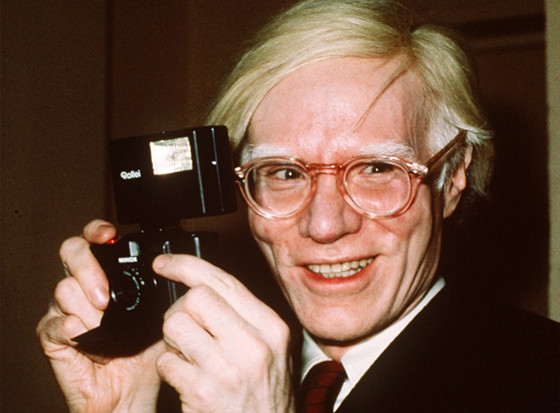
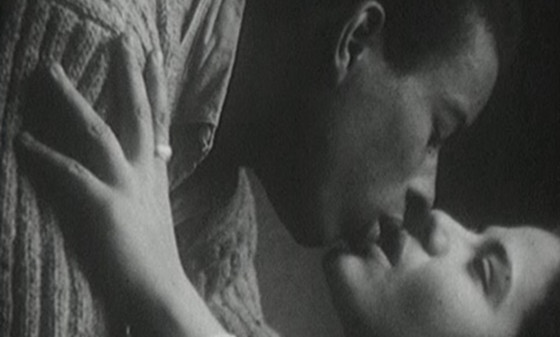
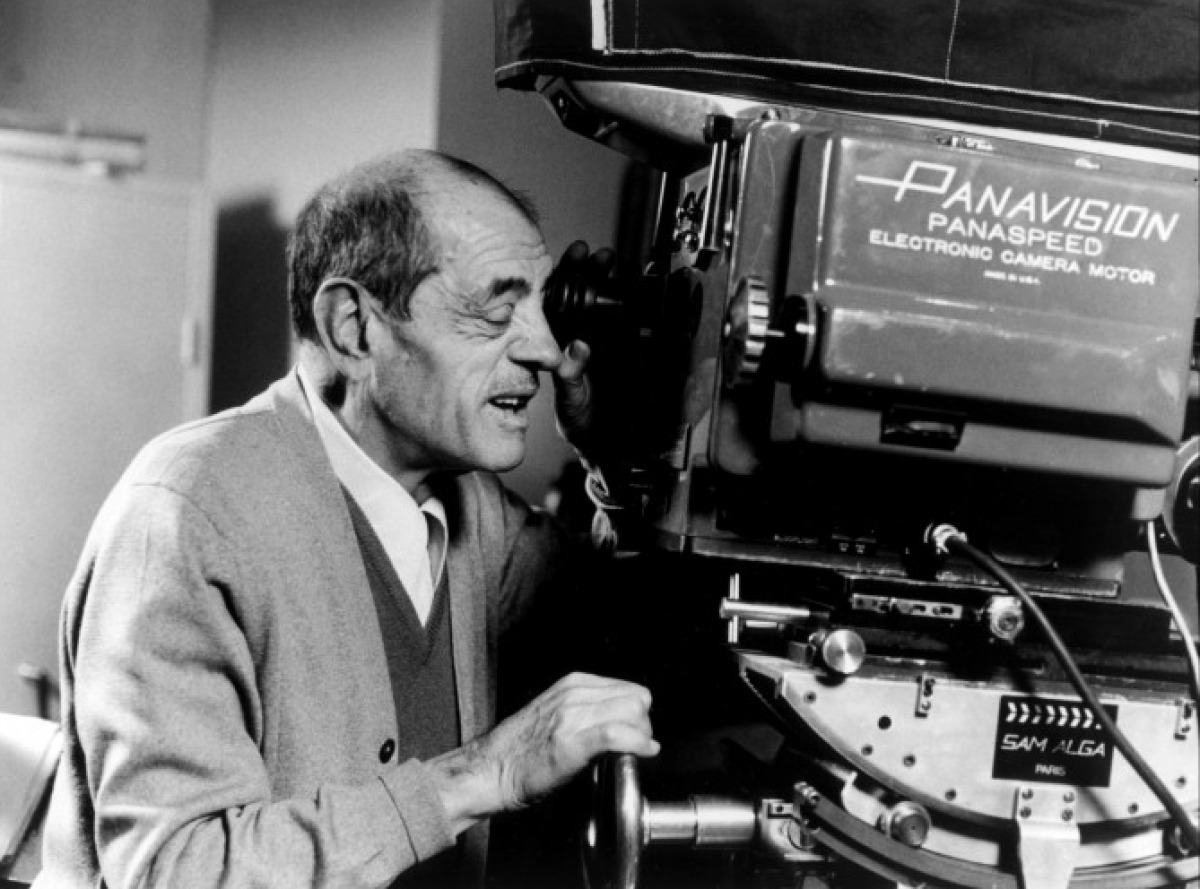
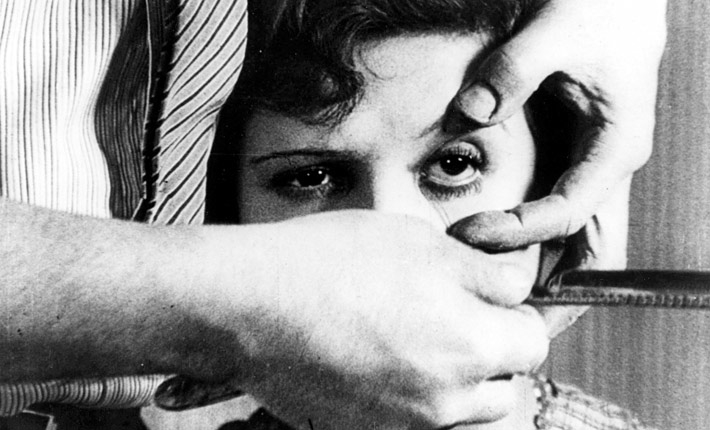
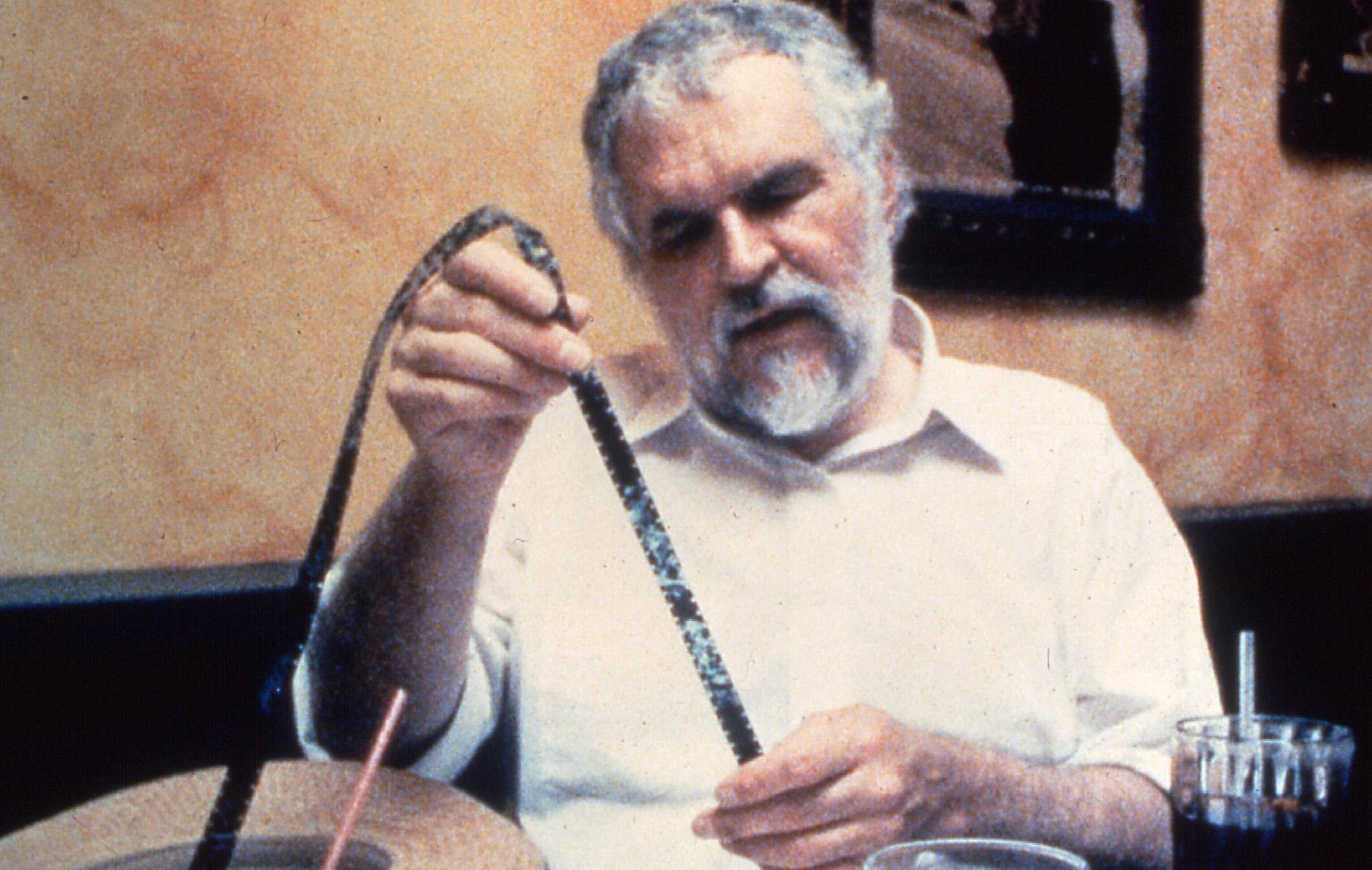
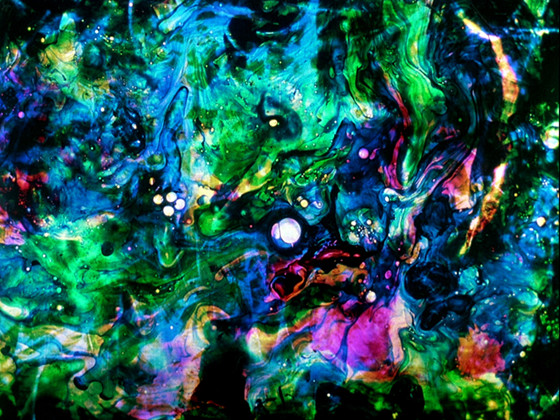
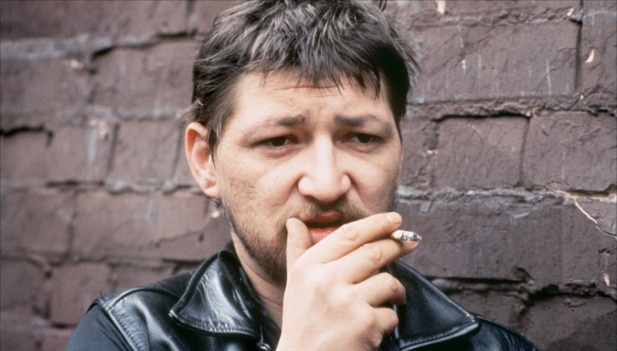
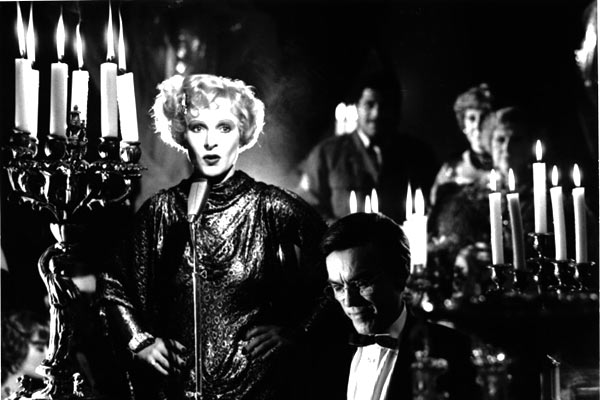
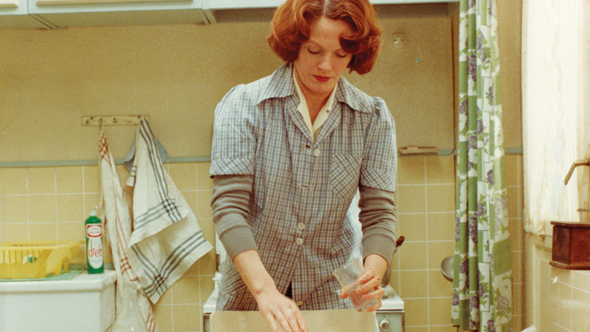



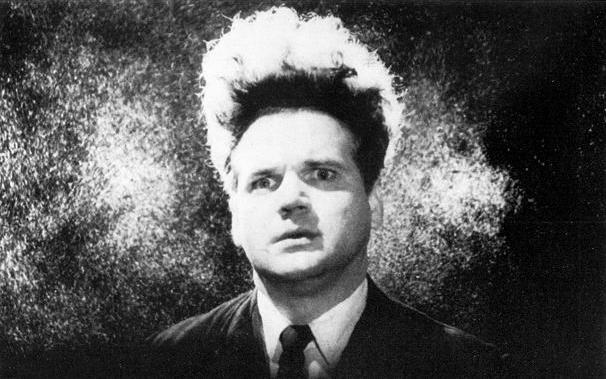
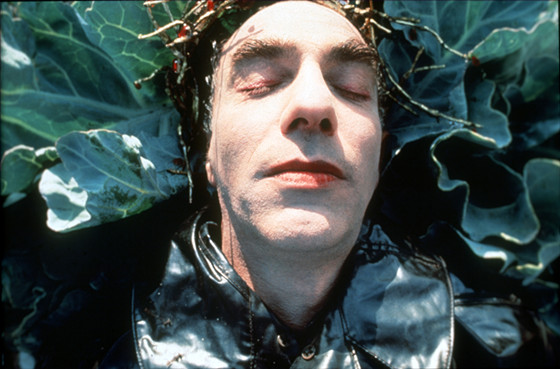
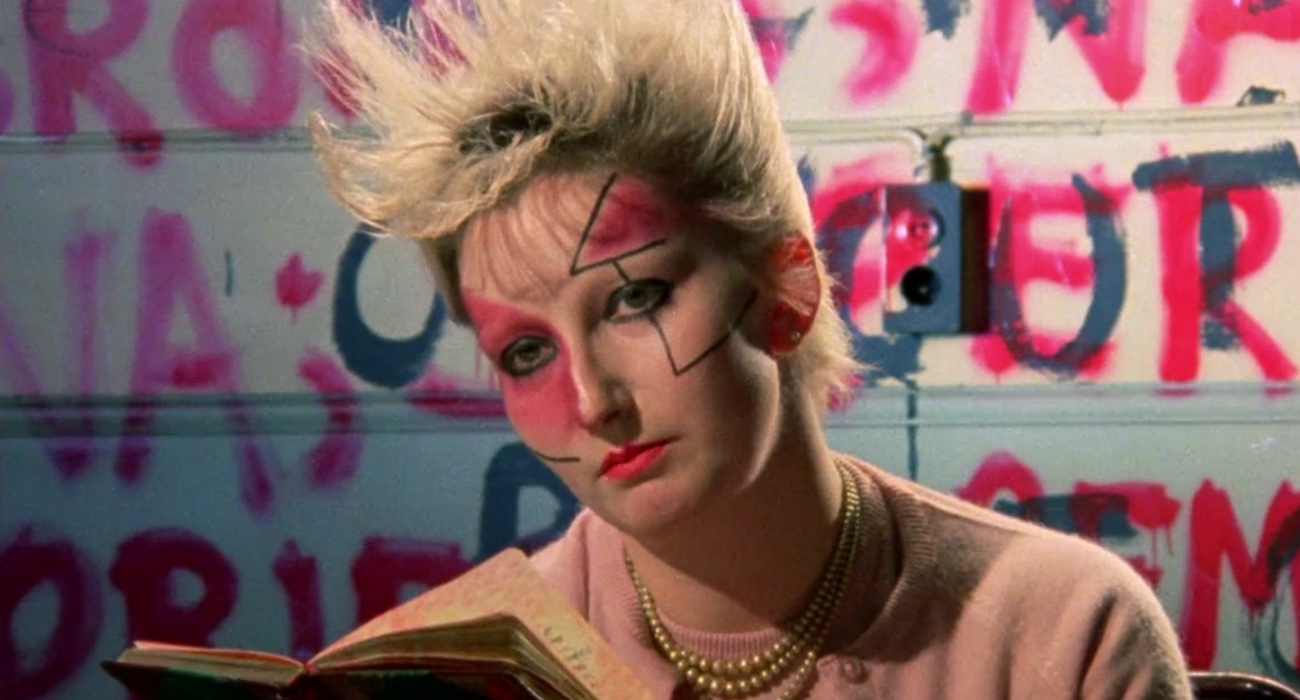

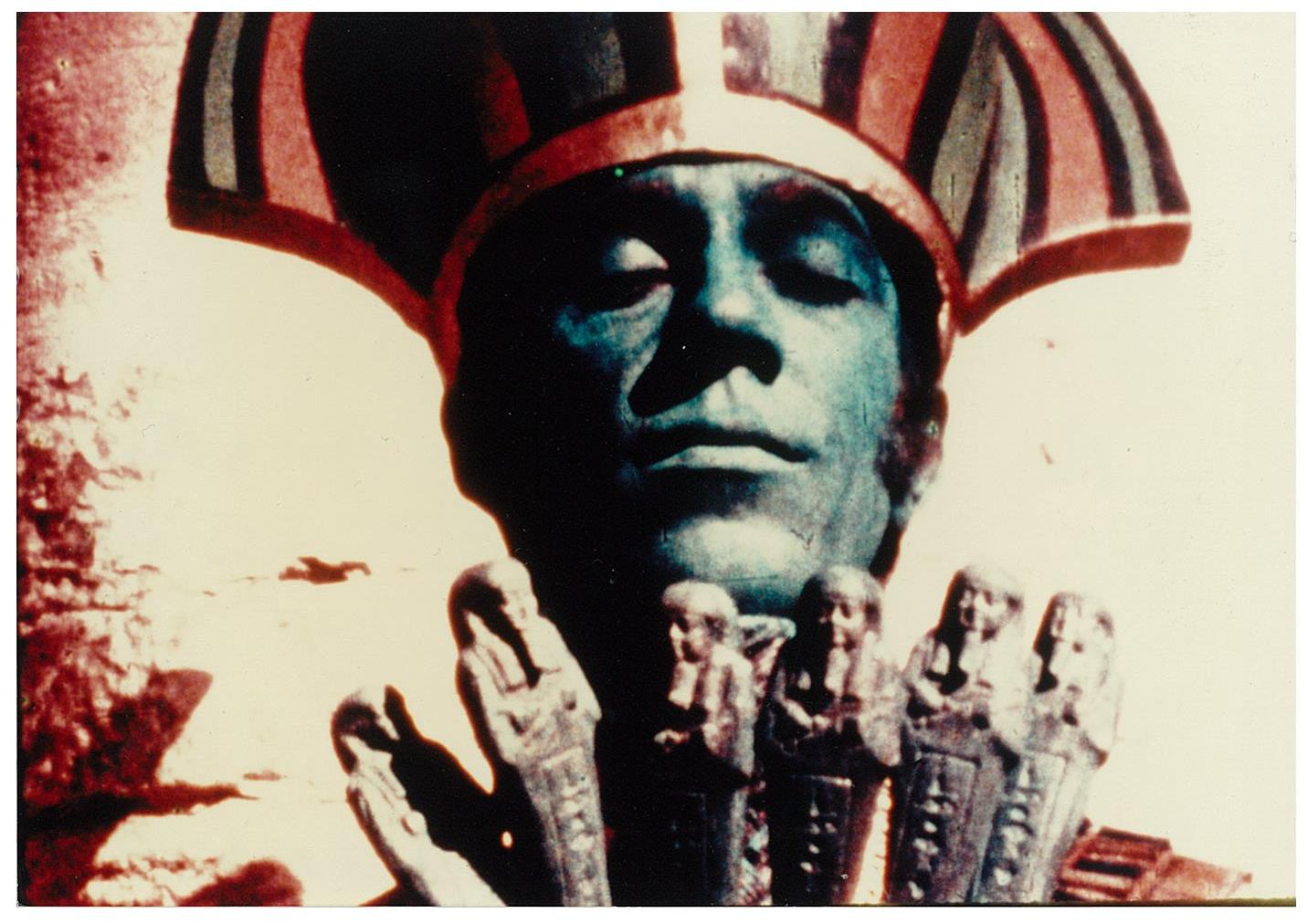

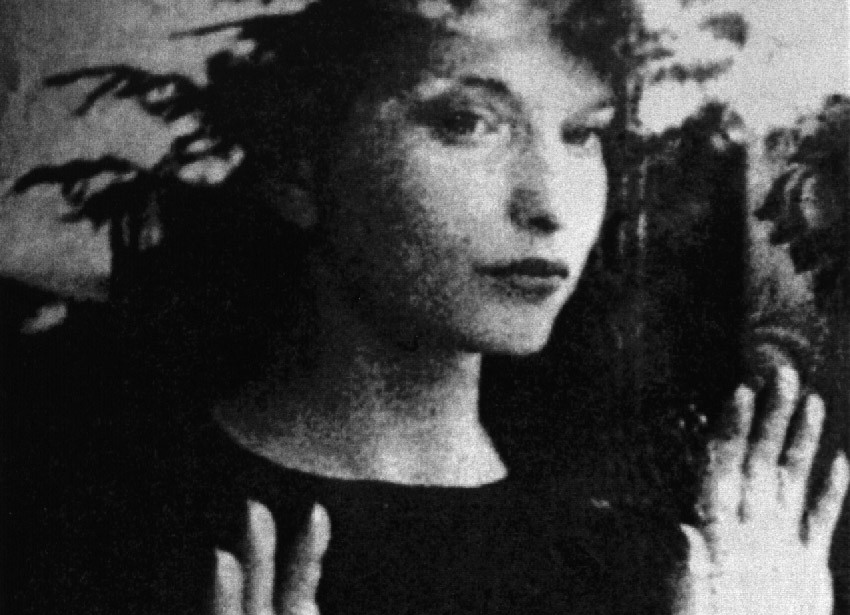

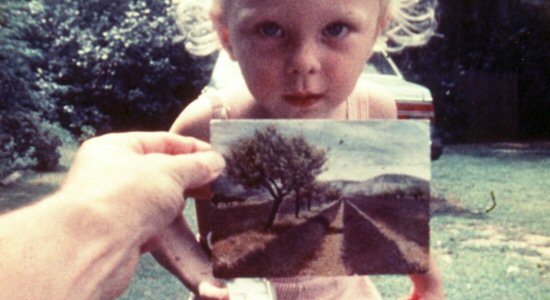
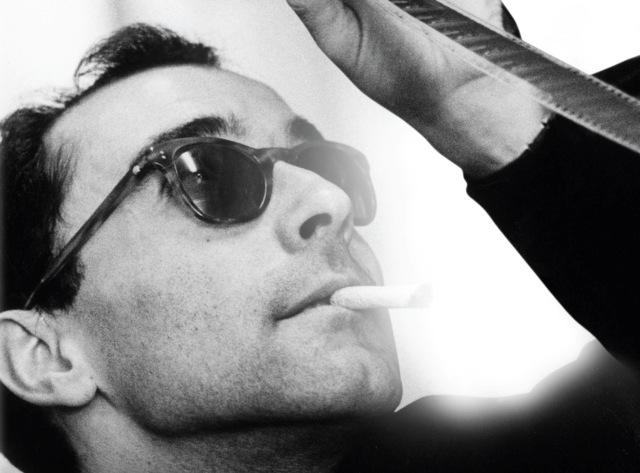
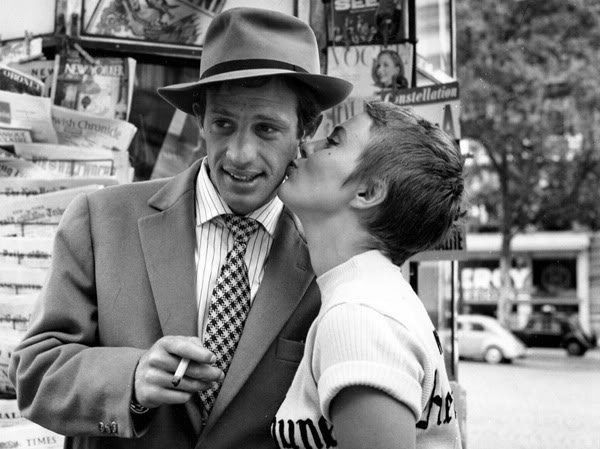

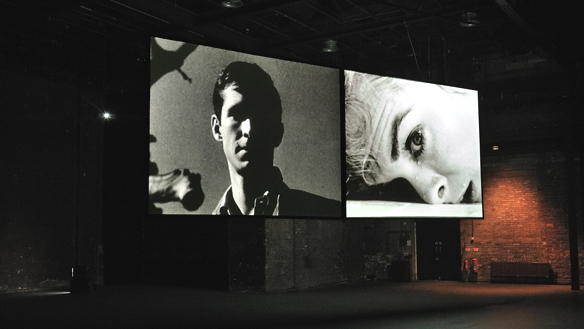

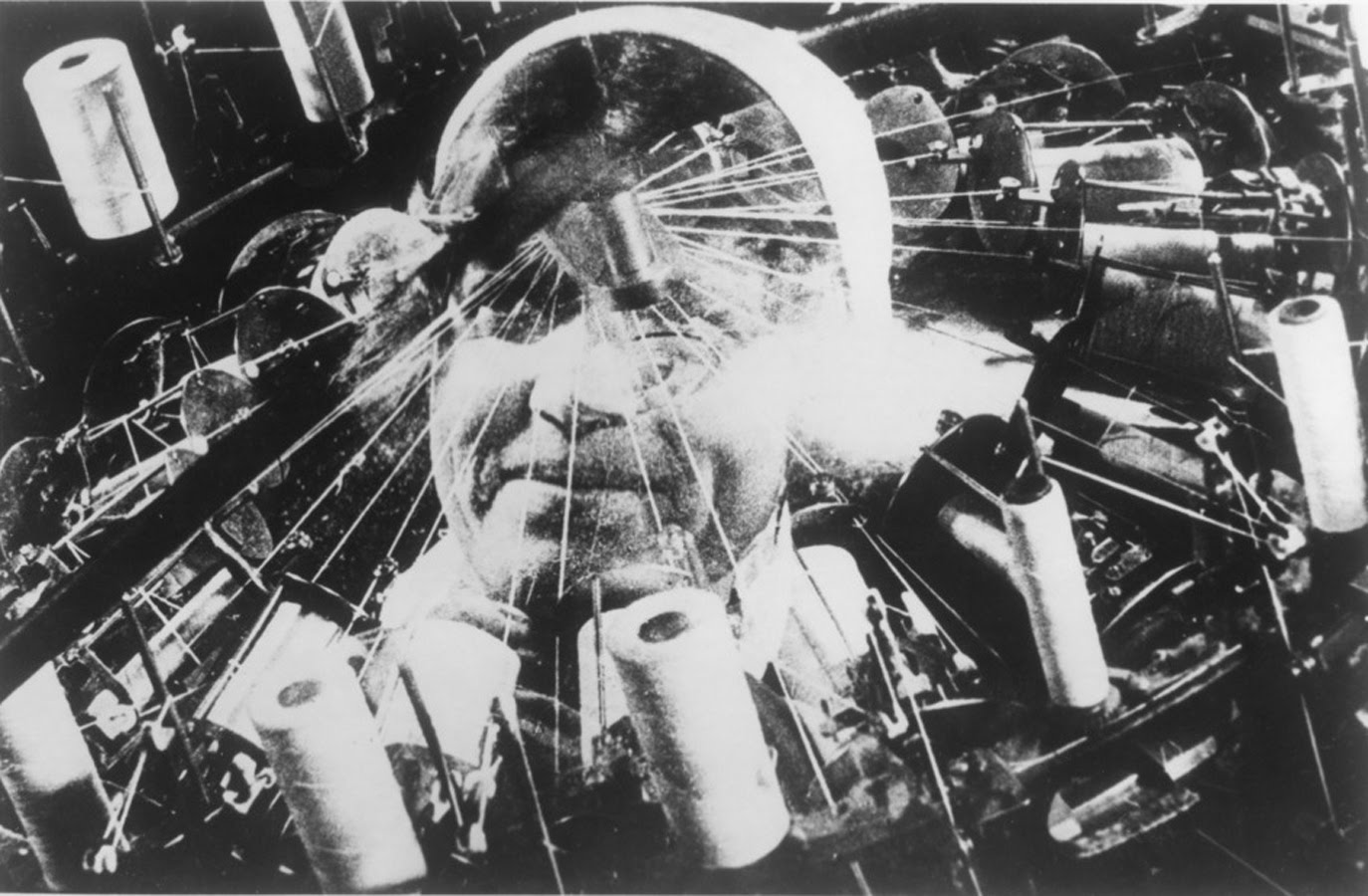


No comments:
Post a Comment